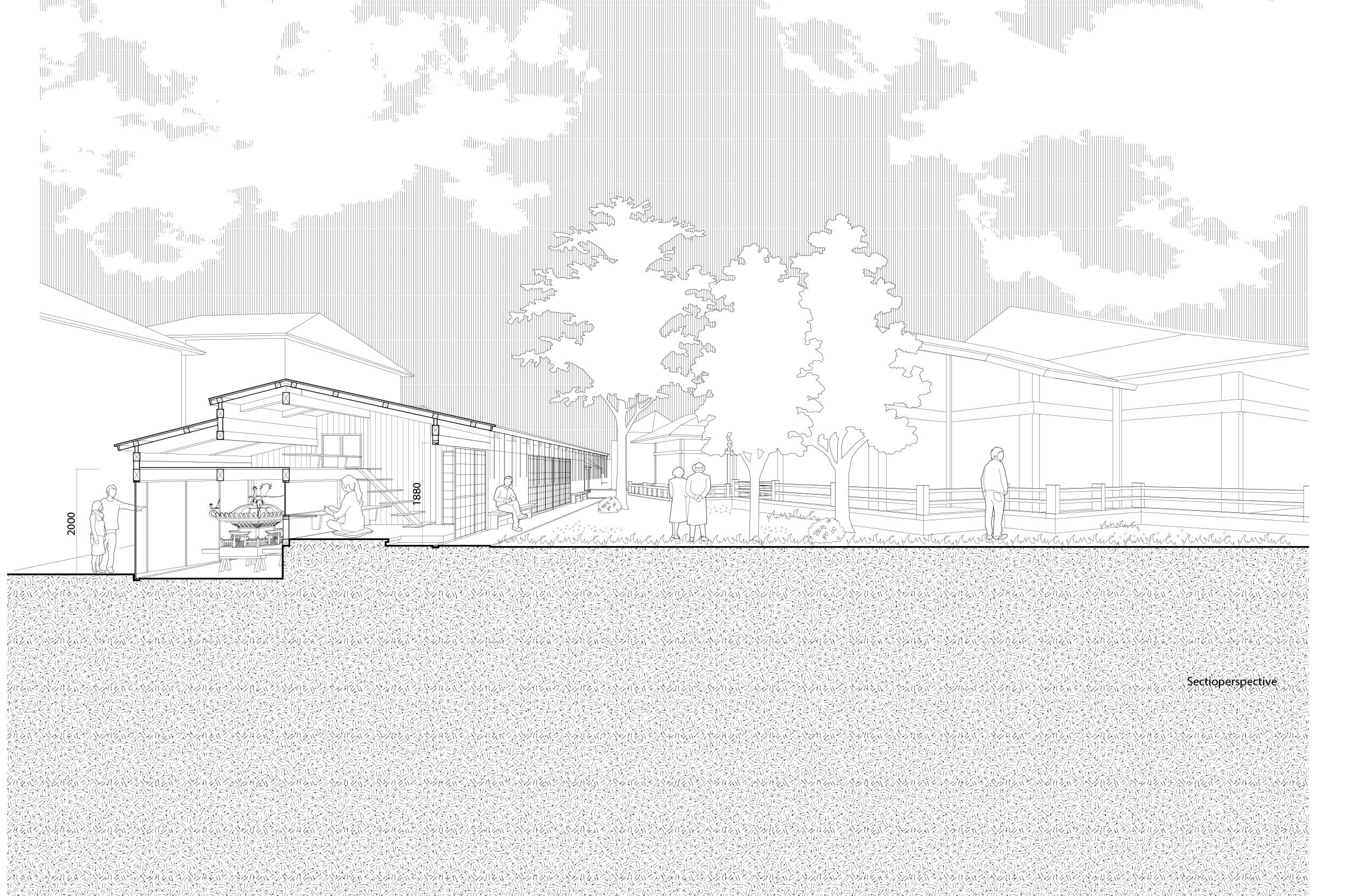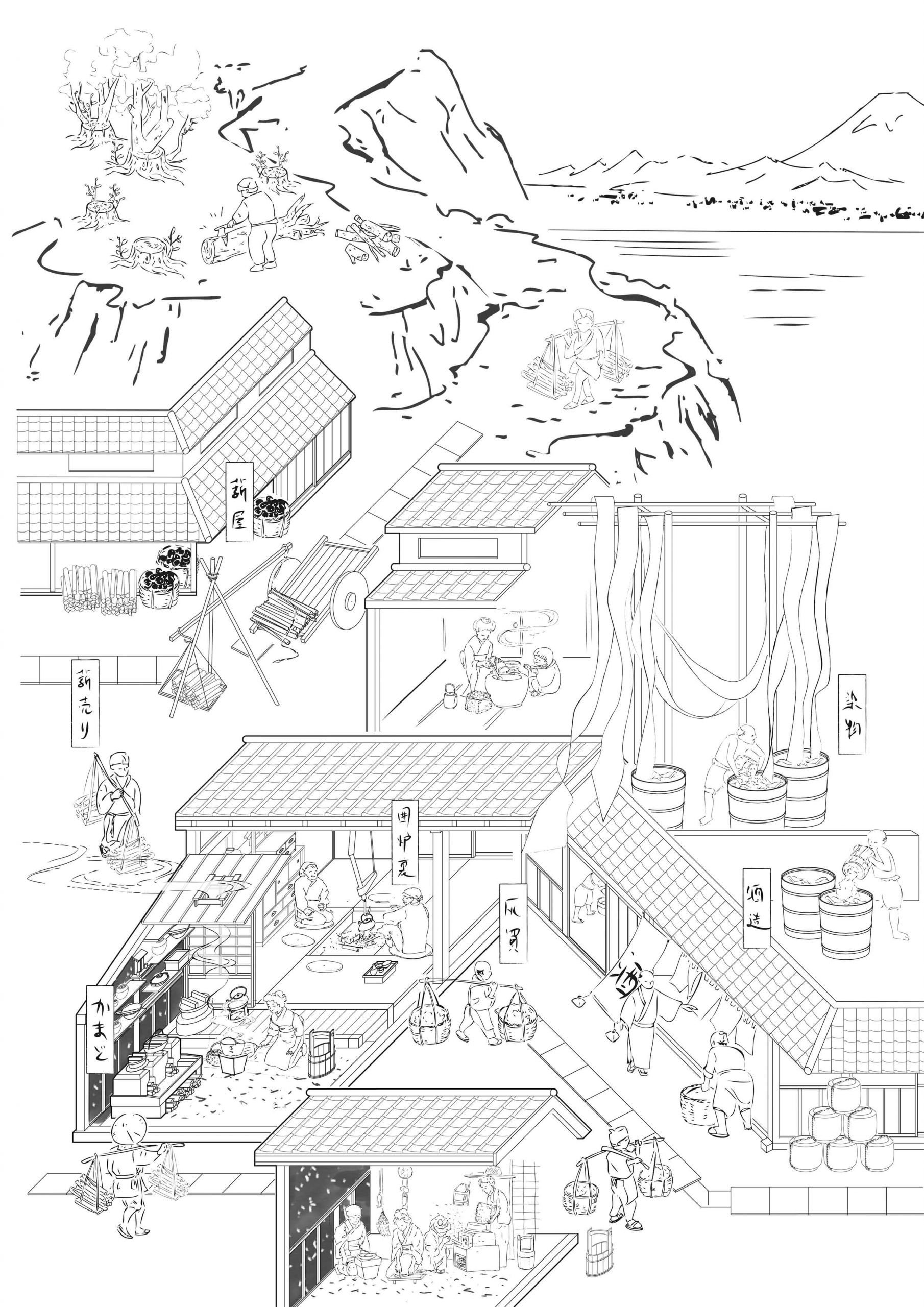SHRINNE HOTEL
In Japan, there is a religious space as an open space that is closely related to the lives of ur- ban citizens. Not only during the festival, but it is also a space like a public square where nearby people gather in daily life.
The annual festival is the most important ritual held annually at shrines. The annual festival is held once a year, often on a day that people can gather this public space.
at th same time, A mikoshi is a sacred reli- gious palanquin (also translated as a portable Shinto shrine). Shinto followers believe that it serves as the vehicle to transport a deity in Japan while moving between the main shrine and temporary shrine during a festival or when moving to a new shrine. Often, the mikoshi resembles a miniature building, with pillars, walls, a roof, a veranda, and a railing.
During a matsuri (Japanese festival) involving a mikoshi, people bear the mikoshi on their shoulders by means of two, four (or some- times, rarely, six) poles. They bring the mikoshi from the shrine, carry it around the neighbor- hoods that worship at the shrine, and in many cases leave it in a designate.
Student: Peijing Hua
Stove
As a once archetypal household element, the stove has gradually become invisible in contemporary housing, with open-flame cooking disappearing into glasstop IH stoves and heating being concealed in the floors. Simultaneously the energy supply system has grown into an extensive and cohesive global network, at once distant and thus invisible to its end users yet heavily transforming the hinterland. Until the end of the nineteenth century the network was tangible and concrete: firewood was acquired from the forest, purchased by each household and used for the stove, and afterward the ash produced was re-collected by ash-traders for other uses such as sake brewing. From around 1960 Japan increasingly imported liquefied natural gas via tanker ships as an alternative energy supply, requiring a complicated gas-supply infrastructure, along with urban renewal, including shipyards, pipelines, gasometers, etc. Today the power system is a hybrid one, fed from multiple resources, including atomic power and renewable energy, making the network evermore extensive and abstruse.
Elevator
Usually, elevators are supposed to smoothen vertical transportation inside a building. Perfectly integrated into the layout of contemporary office buildings and towers, as well as into the habits of the users, its presence only becomes palpable when the movement of the elevator is disrupted, when the cabin gets stuck, a button does not react, or when the doors do not work as commanded. One of the most common of these frustrated expectations is the sudden closing of the doors of the elevator directly in front of the user—be it by inadvertence, late arrival, or by the deliberate actions of a person inside the cabin—thus deflecting the user from a trajectory that was until that moment taken for granted, and yet simultaneously turning it into a new opportunity.

